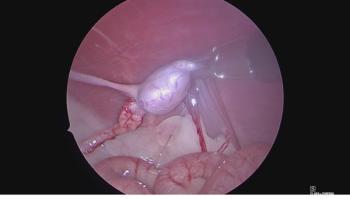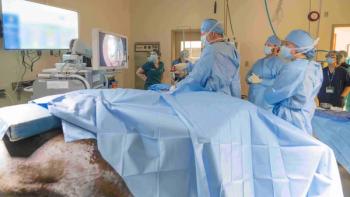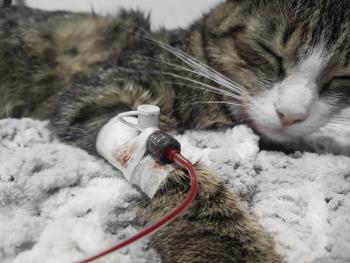
Carpal & tarsal sports related injuries (Proceedings)
Injuries to the carpus and tarsus are common in agility and sporting dogs. The carpal and tarsal joints act as sock absorbers for the limb during weight bearing. They are prone to injury due to their complexity and lack of muscular support. The complexity of these joints creates a diagnostic problem for many veterinarians. Many carpal and tarsal injuries, particularly those that go undiagnosed or untreated, can result in an increased risk of osteoarthritis and potential long-term lameness.
Injuries to the carpus and tarsus are common in agility and sporting dogs. The carpal and tarsal joints act as sock absorbers for the limb during weight bearing. They are prone to injury due to their complexity and lack of muscular support. The complexity of these joints creates a diagnostic problem for many veterinarians. Many carpal and tarsal injuries, particularly those that go undiagnosed or untreated, can result in an increased risk of osteoarthritis and potential long-term lameness.
Anatomy
The carpus and tarsus are multilevel joints with several supportive ligaments and joint capsule. The carpus is composed of three articulations; the antebrachiocarpal joint, the middle carpal joint, and the carpometacarpal joint. The majority of carpal range of motion (70%) is at the antebrachiocarpal joint with relative minimal motion of the middle carpal and carpometacarpal joints. There is a thick fibrocartilage pad on the underside (palmar aspect) of the joint that attaches to the individual carpal and metacarpal bones. The main supportive ligaments of the carpus include the medial (radial) and lateral (ulnar) collateral ligaments which support each side of the joint and numerous dorsal (upperside) and palmar (underside) ligaments resulting in a supportive web. Similarly, the tarsal joint is complex, comprised of four articulations; the tibiotarsal joint, proximal (top) intertarsal joint, distal (bottom) intertarsal joint, and tarsometatarsal joint. The majority of tarsal range of motion (80%) occurs at the tibiotarsal joint. The joint is supportive by numerous ligaments including the medial and lateral collateral ligaments, dorsal (upperside) and plantar (underside) ligaments.
Cause of injury
Carpal and tarsal injuries can result from either acute traumatic events or activities resulting in repetitive sprains to the supportive structures of the joint. Possible modes of injury include; hyperextension (disruption of the underside ligaments +/- joint capsule which is the most common type seen in agility dogs), hyperflexion with rotation (upperside ligaments and collateral ligaments +/- joint capsule), varus (inside of the limb) or valgus (outside) injuries or degeneration of any ligaments in some breeds ( Collies and Shelties) and certain immune mediated diseases (eg. Rheumatoid arthritis).
Diagnosis
The diagnosis of carpal and tarsal injuries, especially mild in severity, can be difficult. Diagnosis is based on a combination of physical examination and imaging techniques. Dogs with carpal or tarsal injuries can present with either an acute (sudden) or chronic (slowly progressive) lameness of varying degrees depending on the severity of the injury. Palpation of the affected joint may reveal soft tissue swelling, discomfort, crepitus (crunching on manipulation), decreased range of motion, or instability when stressed (either in extension, flexion, varus or valgus, internal or external rotation). Palpation of the nonaffected joint on the other side can be helpful in determining normal from abnormal motion. Radiographs can be taken to evaluate the type and severity of injury. Ligamentous structures cannot be seen on radiographs, but fractures, luxations, or abnormal opening of a joint when stressed (extension, flexion, varus or valgus) can be used to determine ligament integrity. Chronic, or long standing/ repetitive injuries may have bone spurs present at the site of ligamentous attachment to the bone. Fluoroscopy which is performed "real time" can take radiographic images/ video when placing the joint through range of motion. Excessive opening of the joint spaces or abnormal gliding (subluxation) may be noted fluoroscopically for carpal and tarsal injuries (Figure 3). When available, this is ideal over "stress" radiographs to evaluate specific joint motion during manipulation of the carpal or tarsal joint for diagnosis of the injury incurred. In the presence of carpal or tarsal pain without radiographic or abnormalities, magnetic resonance imaging (MRI) can be useful to assist in the diagnosis of minor ligament sprains.
Injuries- Sprains
Carpal and tarsal injuries can be classified into sprains, luxations, fractures, or a combination of these injuries. Sprain injuries are the most commonly identified in performance dogs as well as the most likely undiagnosed injury to the carpal or tarsal joints. A sprain is an injury to a ligament that can occur in the midportion of the ligament or at its attachment to bone. Sprains can be classified into three Grades of severity. Grade 1 sprains are mild and described as an overstretching of the ligament without disruption or loss of function of the ligament. Grade 2 sprains are moderate in severity and are described by a partial tear of the ligament. The general continuity of the ligament is intact though the strength of the ligament is significantly reduced. Grade 3 sprains are severe and result from complete disruption or tearing of the ligament resulting in instability of the joint. Since ligaments have a poor blood supply, and require the formation and organization of collagen (scar tissue) for their repair, ligament healing times can be quite lengthy. Ligaments only regain approximately 60% of their original strength after 1 year. If a gap forms or is present at the junction of the ligament ends during healing, permanent ligament elongation (and subsequent instability) may result even if an intact ligament reforms.
Luxations involve the disruption of multiple ligaments as well as the joint capsule. In the carpus, the antebrachiocarpal joint is the most common site of luxation due to the increased range of motion present in that joint normally as well as its conformation. In the tarsus, however, the intertarsal joints are commonly affected due to the relative lack of bone interdigitation of these joints compared to the tibiotarsal joint (an inherent joint stabilizer).
Common fractures associated with carpal and tarsal injuries in sporting and agility dogs include the attachment sites for the collateral ligaments (avulsion fractures) or bone fractures due to compression or shear forces. Fractures of these sites result in joint instability when stressed on palpation or during weight bearing. Additional sites of fracture include the accessory carpal bone in the front limb, the site of attachment of the flexor carpi ulnaris tendon. A hyperextension injury can result in fracture of the accessory carpal bone where the tendon attaches as well as damage to the palmar (underside) ligaments of the joint. Similarly in the hindlimb, fractures of the calcaneus (heel bone) can occur.
Treatment
Treatment is based on the location and severity of the injury. Mild to moderate ligament sprains (Grade 1 and 2), are amenable to external support either in the form of specialized support wraps, orthothotics or external coaptation with a splint or cast for 6 to 8 weeks in addition to rehabilitation therapy. Supportive bandages allow for immobilization of the joint preventing further injury to the affected ligament and stability of the ligament for healing to occur. Specialized support wraps and orthotics (Figure 4) can be designed and manufactured for each individual for accurate fit and comfort. For more severe cases an external fixator, as an alternative to external bandages or splints, can be placed above and below the injured joint with a hinge over the joint still allowing for support of healing structures while still allowing controlled range of motion of the joint strengthening the resultant repair. Unsupported weight bearing or premature weight bearing during healing can result in an elongated ligament negating the return of ligament strength, resulting in persistent instability. Nonsteroidal anti-inflammatory medications and cryotherapy can be administered in the initial stages of the injury to improve comfort, swelling, and overall limb use.
Severe sprains or luxations resulting in instability usually require surgical intervention. Surgical options include primary repair of the torn ligament, the placement of a prosthetic ligament (suture) to replace the role of the injured ligament when primary repair cannot be performed, or a partial or complete arthrodesis. Arthrodesis is the fusion of a joint. Luxations of the middle carpal, metacarpometacarpal joint, intertarsal or tarsometatarsal joints, or disruption of the palmar or plantar (underside) ligaments can be stabilized with partial (incomplete) arthrodesis. This allows for stabilization of the joint while maintaining the majority of joint motion. When there is instability of the antebrachiocarpal or tibiotarsal joints, complete arthrodesis is usually indicated. The procedure of arthrodesis can be performed by long term stabilization with an external skeletal fixator, plate and screws, or internal pins and wire. Surgical reconstruction or internal arthrodesis requires adjunctive support from an external bandage for at least 6 weeks. Fractures warrant open surgical reduction and internal fixation (plate and screws or pins and screws). Internal fixation of fractures of the small bones of the carpi and tarsi can be difficult due to the small irregular size of the bones involved.
Prevention
Although carpal and tarsal injuries may occur due to repetitive activity and recurrent sprain injury, a good majority of these injuries occur out of the ring. Jumping down from excessively high levels is one of the most common causes of severe injury. Therefore, this activity should be avoided whenever possible. Agility dogs with chronic carpal and tarsal injuries may benefit from a custom support wrap during practice and competition. Unfortunately, very few agility organizations allow for dogs to compete with support wraps.
Newsletter
From exam room tips to practice management insights, get trusted veterinary news delivered straight to your inbox—subscribe to dvm360.




